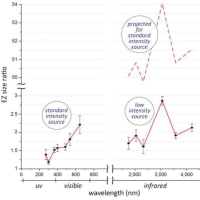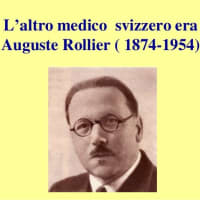3 論文: ビタミンD生成以外の紫外線の有益な効果
- Van Der Lugt L, Rottier PB. Finsen therapy and vitamin D. Acta Derm Venereol. 1958;38:264–73. [PubMed] [Google Scholar]
- Wejse C. Tuberculosis and Vitamin D – What Is the Evidence for Interaction? European Infectious Disease. 2008;2:107–10. [Google Scholar]
- Walker D, Jacobe H. Phototherapy in the age of biologics. Semin Cutan Med Surg. 2011;30:190–8. doi: 10.1016/j.sder.2011.08.004. [PubMed] [CrossRef] [Google Scholar]
- Bulat V, Situm M, Dediol I, Ljubicicá I, Bradicá L. The mechanisms of action of phototherapy in the treatment of the most common dermatoses. Coll Antropol. 2011;35(Suppl 2):147–51. [PubMed] [Google Scholar]
- Mudigonda T, Dabade TS, Feldman SR. A review of targeted ultraviolet B phototherapy for psoriasis. J Am Acad Dermatol. 2012;66:664–72. doi: 10.1016/j.jaad.2011.07.011. [PubMed] [CrossRef] [Google Scholar]
- Krutmann J, Morita A. Mechanisms of ultraviolet (UV) B and UVA phototherapy. J Investig Dermatol Symp Proc. 1999;4:70–2. doi: 10.1038/sj.jidsp.5640185. [PubMed] [CrossRef] [Google Scholar]
- Sage RJ, Lim HW. UV-based therapy and vitamin D. Dermatol Ther. 2010;23:72–81. doi: 10.1111/j.1529-8019.2009.01292.x. [PubMed] [CrossRef] [Google Scholar]
- Lapolla W, Yentzer BA, Bagel J, Halvorson CR, Feldman SR. A review of phototherapy protocols for psoriasis treatment. J Am Acad Dermatol. 2011;64:936–49. doi: 10.1016/j.jaad.2009.12.054. [PubMed] [CrossRef] [Google Scholar]
- Trautinger F. Phototherapy of mycosis fungoides. Photodermatol Photoimmunol Photomed. 2011;27:68–74. doi: 10.1111/j.1600-0781.2011.00559.x. [PubMed] [CrossRef] [Google Scholar]
- Grundmann SA, Beissert S. Modern aspects of phototherapy for atopic dermatitis. J Allergy (Cairo) 2012; 2012:121797. [PMC free article] [PubMed]
- Pavel S. Light therapy (with UVA-1) for SLE patients: is it a good or bad idea? Rheumatology (Oxford) 2006;45:653–5. doi: 10.1093/rheumatology/kel063. [PubMed] [CrossRef] [Google Scholar]
- Mang R, Krutmann J. UVA-1 Phototherapy. Photodermatol Photoimmunol Photomed. 2005;21:103–8. doi: 10.1111/j.1600-0781.2005.00146.x. [PubMed] [CrossRef] [Google Scholar]
- Krutmann J. Therapeutic photoimmunology: photoimmunological mechanisms in photo(chemo)therapy. J Photochem Photobiol B. 1998;44:159–64. doi: 10.1016/S1011-1344(98)00139-0. [PubMed] [CrossRef] [Google Scholar]
- Osmancevic A, Nilsen LT, Landin-Wilhelmsen K, Søyland E, Abusdal Torjesen P, Hagve TA, et al. Effect of climate therapy at Gran Canaria on vitamin D production, blood glucose and lipids in patients with psoriasis. J Eur Acad Dermatol Venereol. 2009;23:1133–40. doi: 10.1111/j.1468-3083.2009.03245.x. [PubMed] [CrossRef] [Google Scholar]
- Cicarma E, Mørk C, Porojnicu AC, Juzeniene A, Tam TT, Dahlback A, et al. Influence of narrowband UVB phototherapy on vitamin D and folate status. Exp Dermatol. 2010;19:e67–72. doi: 10.1111/j.1600-0625.2009.00987.x. [PubMed] [CrossRef] [Google Scholar]
- Osmancevic A, Landin-Wilhelmsen K, Larkö O, Krogstad AL. Vitamin D status in psoriasis patients during different treatments with phototherapy. J Photochem Photobiol B. 2010;101:117–23. doi: 10.1016/j.jphotobiol.2010.05.008. [PubMed] [CrossRef] [Google Scholar]
- Nicolaidou E, Antoniou C, Stratigos A, Katsambas AD. Narrowband ultraviolet B phototherapy and 308-nm excimer laser in the treatment of vitiligo: a review. J Am Acad Dermatol. 2009;60:470–7. doi: 10.1016/j.jaad.2008.07.053. [PubMed] [CrossRef] [Google Scholar]
- Yaghoobi R, Omidian M, Bagherani N. Vitiligo: a review of the published work. J Dermatol. 2011;38:419–31. doi: 10.1111/j.1346-8138.2010.01139.x. [PubMed] [CrossRef] [Google Scholar]
- Boissy RE, Nordlund JJ. Vitiligo: current medical and scientific understanding. G Ital Dermatol Venereol. 2011;146:69–75. [PubMed] [Google Scholar]
- Krutmann J, Hönigsmann H, Elmets CA. Dermatological Phototherapy and Photodiagnostic Methods. In: Krutmann J, Honigsmann H, Elmets CA, eds. Second eds. Leipzig: Springer, 2009: 1-447. [Google Scholar]
- Oyoshi MK, He R, Kumar L, Yoon J, Geha RS. Cellular and molecular mechanisms in atopic dermatitis. Adv Immunol. 2009;102:135–226. doi: 10.1016/S0065-2776(09)01203-6. [PubMed] [CrossRef] [Google Scholar]
- Krutmann J. Phototherapy for atopic dermatitis. Clin Exp Dermatol. 2000;25:552–8. doi: 10.1046/j.1365-2230.2000.00700.x. [PubMed] [CrossRef] [Google Scholar]
- Kroft EB, Berkhof NJ, van de Kerkhof PC, Gerritsen RM, de Jong EM. Ultraviolet A phototherapy for sclerotic skin diseases: a systematic review. J Am Acad Dermatol. 2008;59:1017–30. doi: 10.1016/j.jaad.2008.07.042. [PubMed] [CrossRef] [Google Scholar]
- Lehmann P, Hölzle E, Melnik B, Plewig G. Effects of ultraviolet A and B on the skin barrier: a functional, electron microscopic and lipid biochemical study. Photodermatol Photoimmunol Photomed. 1991;8:129–34. [PubMed] [Google Scholar]
- Jungersted JM, Høgh JK, Hellgren LI, Jemec GB, Agner T. The impact of ultraviolet therapy on stratum corneum ceramides and barrier function. Photodermatol Photoimmunol Photomed. 2011;27:331–3. doi: 10.1111/j.1600-0781.2011.00618.x. [PubMed] [CrossRef] [Google Scholar]
- Holick MF. Sunlight and vitamin D for bone health and prevention of autoimmune diseases, cancers, and cardiovascular disease. Am J Clin Nutr. 2004;80(Suppl):1678S–88S. [PubMed] [Google Scholar]
- Grant WB. Ecological studies of the UVB-vitamin D-cancer hypothesis. Anticancer Res. 2012;32:223–36. [PubMed] [Google Scholar]
- Chakraborti CK. Vitamin D as a promising anticancer agent. Indian J Pharmacol. 2011;43:113–20. doi: 10.4103/0253-7613.77335. [PMC free article] [PubMed] [CrossRef] [Google Scholar]
- Di Rosa M, Malaguarnera M, Nicoletti F, Malaguarnera L. Vitamin D3: a helpful immuno-modulator. Immunology. 2011;134:123–39. doi: 10.1111/j.1365-2567.2011.03482.x. [PMC free article] [PubMed] [CrossRef] [Google Scholar]
- Zhang R, Naughton DP. Vitamin D in health and disease: current perspectives. Nutr J. 2010;9:65. doi: 10.1186/1475-2891-9-65. [PMC free article] [PubMed] [CrossRef] [Google Scholar]
- Thacher TD, Clarke BL. Vitamin D insufficiency. Mayo Clin Proc. 2011;86:50–60. doi: 10.4065/mcp.2010.0567. [PMC free article] [PubMed] [CrossRef] [Google Scholar]
- Parker J, Hashmi O, Dutton D, Mavrodaris A, Stranges S, Kandala NB, et al. Levels of vitamin D and cardiometabolic disorders: systematic review and meta-analysis. Maturitas. 2010;65:225–36. doi: 10.1016/j.maturitas.2009.12.013. [PubMed] [CrossRef] [Google Scholar]
- Witham MD, Nadir MA, Struthers AD. Effect of vitamin D on blood pressure: a systematic review and meta-analysis. J Hypertens. 2009;27:1948–54. doi: 10.1097/HJH.0b013e32832f075b. [PubMed] [CrossRef] [Google Scholar]
- Grandi NC, Breitling LP, Brenner H. Vitamin D and cardiovascular disease: systematic review and meta-analysis of prospective studies. Prev Med. 2010;51:228–33. doi: 10.1016/j.ypmed.2010.06.013. [PubMed] [CrossRef] [Google Scholar]
- Elamin MB, Abu Elnour NO, Elamin KB, Fatourechi MM, Alkatib AA, Almandoz JP, et al. Vitamin D and cardiovascular outcomes: a systematic review and meta-analysis. J Clin Endocrinol Metab. 2011;96:1931–42. doi: 10.1210/jc.2011-0398. [PubMed] [CrossRef] [Google Scholar]
- Sokol SI, Tsang P, Aggarwal V, Melamed ML, Srinivas VS. Vitamin D status and risk of cardiovascular events: lessons learned via systematic review and meta-analysis. Cardiol Rev. 2011;19:192–201. doi: 10.1097/CRD.0b013e31821da9a5. [PubMed] [CrossRef] [Google Scholar]
- Zittermann A, Iodice S, Pilz S, Grant WB, Bagnardi V, Gandini S. Vitamin D deficiency and mortality risk in the general population: a meta-analysis of prospective cohort studies. Am J Clin Nutr. 2012;95:91–100. doi: 10.3945/ajcn.111.014779. [PubMed] [CrossRef] [Google Scholar]
- Schöttker B, Ball D, Gellert C, Brenner H. Serum 25-hydroxyvitamin D levels and overall mortality. A systematic review and meta-analysis of prospective cohort studies. Ageing Res Rev. 2012 doi: 10.1016/j.arr.2012.02.004. [PubMed] [CrossRef] [Google Scholar]
- Grant WB. Relation between prediagnostic serum 25-hydroxyvitamin D level and incidence of breast, colorectal, and other cancers. J Photochem Photobiol B. 2010;101:130–6. doi: 10.1016/j.jphotobiol.2010.04.008. [PubMed] [CrossRef] [Google Scholar]
- Freedman DM, Looker AC, Chang SC, Graubard BI. Prospective study of serum vitamin D and cancer mortality in the United States. J Natl Cancer Inst. 2007;99:1594–602. doi: 10.1093/jnci/djm204. [PubMed] [CrossRef] [Google Scholar]
- van der Rhee H, Coebergh JW, de Vries E. Sunlight, vitamin D and the prevention of cancer: a systematic review of epidemiological studies. Eur J Cancer Prev. 2009 doi: 10.1097/CEJ.0b013e32832f9bb1. [PubMed] [CrossRef] [Google Scholar]
- Mohr SB, Gorham ED, Alcaraz JE, Kane CJ, Macera CA, Parsons JK, et al. Serum 25-hydroxyvitamin D and prevention of breast cancer: pooled analysis. Anticancer Res. 2011;31:2939–48. [PubMed] [Google Scholar]
- Bjelakovic G, Gluud LL, Nikolova D, Whitfield K, Wetterslev J, Simonetti RG, et al. Vitamin D supplementation for prevention of mortality in adults. Cochrane Database Syst Rev. 2011:CD007470. [PubMed] [Google Scholar]
- Chung M, Lee J, Terasawa T, Lau J, Trikalinos TA. Vitamin D with or without calcium supplementation for prevention of cancer and fractures: an updated meta-analysis for the U.S. Preventive Services Task Force. Ann Intern Med. 2011;155:827–38. [PubMed] [Google Scholar]
- Avenell A, MacLennan GS, Jenkinson DJ, McPherson GC, McDonald AM, Pant PR, et al.RECORD Trial Group Long-term follow-up for mortality and cancer in a randomized placebo-controlled trial of vitamin D(3) and/or calcium (RECORD trial) J Clin Endocrinol Metab. 2012;97:614–22. doi: 10.1210/jc.2011-1309. [PubMed] [CrossRef] [Google Scholar]
- Drake MT, Maurer MJ, Link BK, Habermann TM, Ansell SM, Micallef IN, et al. Vitamin D insufficiency and prognosis in non-Hodgkin’s lymphoma. J Clin Oncol. 2010;28:4191–8. doi: 10.1200/JCO.2010.28.6674. [PMC free article] [PubMed] [CrossRef] [Google Scholar]
- Tretli S, Schwartz GG, Torjesen PA, Robsahm TE. Serum levels of 25-hydroxyvitamin D and survival in Norwegian patients with cancer of breast, colon, lung, and lymphoma: a population-based study. Cancer Causes Control. 2012;23:363–70. doi: 10.1007/s10552-011-9885-6. [PMC free article] [PubMed] [CrossRef] [Google Scholar]
- Hagenau T, Vest R, Gissel TN, Poulsen CS, Erlandsen M, Mosekilde L, et al. Global vitamin D levels in relation to age, gender, skin pigmentation and latitude: an ecologic meta-regression analysis. Osteoporos Int. 2009;20:133–40. doi: 10.1007/s00198-008-0626-y. [PubMed] [CrossRef] [Google Scholar]
- Snellman G, Melhus H, Gedeborg R, Byberg L, Berglund L, Wernroth L, et al. Determining vitamin D status: a comparison between commercially available assays. PLoS One. 2010;5:e11555. doi: 10.1371/journal.pone.0011555. [PMC free article] [PubMed] [CrossRef] [Google Scholar]
- Ponsonby AL, McMichael A, van der Mei I. Ultraviolet radiation and autoimmune disease: insights from epidemiological research. Toxicology. 2002;181-182:71–8. doi: 10.1016/S0300-483X(02)00257-3. [PubMed] [CrossRef] [Google Scholar]
- Becklund BR, Severson KS, Vang SV, DeLuca HF. UV radiation suppresses experimental autoimmune encephalomyelitis independent of vitamin D production. Proc Natl Acad Sci U S A. 2010;107:6418–23. doi: 10.1073/pnas.1001119107. [PMC free article] [PubMed] [CrossRef] [Google Scholar]
- Lucas RM, Ponsonby AL, Dear K, Valery PC, Pender MP, Taylor BV, et al. Sun exposure and vitamin D are independent risk factors for CNS demyelination. Neurology. 2011;76:540–8. doi: 10.1212/WNL.0b013e31820af93d. [PubMed] [CrossRef] [Google Scholar]
- Bäärnhielm M, Hedström AK, Kockum I, Sundqvist E, Gustafsson SA, Hillert J, et al. Sunlight is associated with decreased multiple sclerosis risk: no interaction with human leukocyte antigen-DRB1*15. Eur J Neurol. 2012 doi: 10.1111/j.1468-1331.2011.03650.x. [PubMed] [CrossRef] [Google Scholar]
- Grant WB, Peiris AN. Possible role of serum 25-hydroxyvitamin D in black-white health disparities in the United States. J Am Med Dir Assoc. 2010;11:617–28. doi: 10.1016/j.jamda.2010.03.013. [PubMed] [CrossRef] [Google Scholar]
- Signorello LB, Shi J, Cai Q, Zheng W, Williams SM, Long J, et al. Common variation in vitamin D pathway genes predicts circulating 25-hydroxyvitamin D Levels among African Americans. PLoS One. 2011;6:e28623. doi: 10.1371/journal.pone.0028623. [PMC free article] [PubMed] [CrossRef] [Google Scholar]
- Kaufman MD, Johnson SK, Moyer D, Bivens J, Norton HJ. Multiple sclerosis: severity and progression rate in African Americans compared with whites. Am J Phys Med Rehabil. 2003;82:582–90. doi: 10.1097/01.PHM.0000078199.99484.E2. [PubMed] [CrossRef] [Google Scholar]
- Hart PH, Gorman S, Finlay-Jones JJ. Modulation of the immune system by UV radiation: more than just the effects of vitamin D? Nat Rev Immunol. 2011;11:584–96. doi: 10.1038/nri3045. [PubMed] [CrossRef] [Google Scholar]
- Norval M. The mechanisms and consequences of ultraviolet-induced immunosuppression in the skin and eye. Eye Contact Lens. 2011;37:176–84. doi: 10.1097/ICL.0b013e31821d7573. [PubMed] [CrossRef] [Google Scholar]
- Paunel AN, Dejam A, Thelen S, Kirsch M, Horstjann M, Gharini P, et al. Enzyme-independent nitric oxide formation during UVA challenge of human skin: characterization, molecular sources, and mechanisms. Free Radic Biol Med. 2005;38:606–15. doi: 10.1016/j.freeradbiomed.2004.11.018. [PubMed] [CrossRef] [Google Scholar]
- Opländer C, Volkmar CM, Paunel-Görgülü A, van Faassen EE, Heiss C, Kelm M, et al. Whole body UVA irradiation lowers systemic blood pressure by release of nitric oxide from intracutaneous photolabile nitric oxide derivates. Circ Res. 2009;105:1031–40. doi: 10.1161/CIRCRESAHA.109.207019. [PubMed] [CrossRef] [Google Scholar]
- Suschek CV, Opländer C, van Faassen EE. Non-enzymatic NO production in human skin: effect of UVA on cutaneous NO stores. Nitric Oxide. 2010;22:120–35. doi: 10.1016/j.niox.2009.10.006. [PubMed] [CrossRef] [Google Scholar]
- Weller R. Nitric oxide: a key mediator in cutaneous physiology. Clin Exp Dermatol. 2003;28:511–4. doi: 10.1046/j.1365-2230.2003.01365.x. [PubMed] [CrossRef] [Google Scholar]
- Rodriguez J, Maloney RE, Rassaf T, Bryan NS, Feelisch M. Chemical nature of nitric oxide storage forms in rat vascular tissue. Proc Natl Acad Sci U S A. 2003;100:336–41. doi: 10.1073/pnas.0234600100. [PMC free article] [PubMed] [CrossRef] [Google Scholar]
- Mowbray M, McLintock S, Weerakoon R, Lomatschinsky N, Jones S, Rossi AG, et al. Enzyme-independent NO stores in human skin: quantification and influence of UV radiation. J Invest Dermatol. 2009;129:834–42. doi: 10.1038/jid.2008.296. [PubMed] [CrossRef] [Google Scholar]
- Suschek CV, Schroeder P, Aust O, Sies H, Mahotka C, Horstjann M, et al. The presence of nitrite during UVA irradiation protects from apoptosis. FASEB J. 2003;17:2342–4. [PubMed] [Google Scholar]
- Feelisch M, Kolb-Bachofen V, Liu D, Lundberg JO, Revelo LP, Suschek CV, et al. Is sunlight good for our heart? Eur Heart J. 2010;31:1041–5. doi: 10.1093/eurheartj/ehq069. [PubMed] [CrossRef] [Google Scholar]
- Lundberg JO, Weitzberg E. NO-synthase independent NO generation in mammals. Biochem Biophys Res Commun. 2010;396:39–45. doi: 10.1016/j.bbrc.2010.02.136. [PubMed] [CrossRef] [Google Scholar]
- Lundberg JO, Weitzberg E, Gladwin MT. The nitrate-nitrite-nitric oxide pathway in physiology and therapeutics. Nat Rev Drug Discov. 2008;7:156–67. doi: 10.1038/nrd2466. [PubMed] [CrossRef] [Google Scholar]
- Shekhter AB, Serezhenkov VA, Rudenko TG, Pekshev AV, Vanin AF. Beneficial effect of gaseous nitric oxide on the healing of skin wounds. Nitric Oxide. 2005;12:210–9. doi: 10.1016/j.niox.2005.03.004. [PubMed] [CrossRef] [Google Scholar]
- Ghaffari A, Miller CC, McMullin B, Ghahary A. Potential application of gaseous nitric oxide as a topical antimicrobial agent. Nitric Oxide. 2006;14:21–9. doi: 10.1016/j.niox.2005.08.003. [PubMed] [CrossRef] [Google Scholar]
- Ghaffari A, Jalili R, Ghaffari M, Miller C, Ghahary A. Efficacy of gaseous nitric oxide in the treatment of skin and soft tissue infections. Wound Repair Regen. 2007;15:368–77. doi: 10.1111/j.1524-475X.2007.00239.x. [PubMed] [CrossRef] [Google Scholar]
- Morcos E, Carlsson S, Weitzberg E, Wiklund NP, Lundberg JO. Inhibition of cancer cell replication by inorganic nitrite. Nutr Cancer. 2010;62:501–4. doi: 10.1080/01635580903441170. [PubMed] [CrossRef] [Google Scholar]
- Slominski A, Tobin DJ, Shibahara S, Wortsman J. Melanin pigmentation in mammalian skin and its hormonal regulation. Physiol Rev. 2004;84:1155–228. doi: 10.1152/physrev.00044.2003. [PubMed] [CrossRef] [Google Scholar]
- Kuritzky LA, Finlay-Jones JJ, Hart PH. The controversial role of vitamin D in the skin: immunosuppression vs. photoprotection. Clin Exp Dermatol. 2008;33:167–70. doi: 10.1111/j.1365-2230.2007.02632.x. [PubMed] [CrossRef] [Google Scholar]
- Mason RS, Sequeira VB, Dixon KM, Gordon-Thomson C, Pobre K, Dilley A, et al. Photoprotection by 1alpha,25-dihydroxyvitamin D and analogs: further studies on mechanisms and implications for UV-damage. J Steroid Biochem Mol Biol. 2010;121:164–8. doi: 10.1016/j.jsbmb.2010.03.082. [PubMed] [CrossRef] [Google Scholar]
























